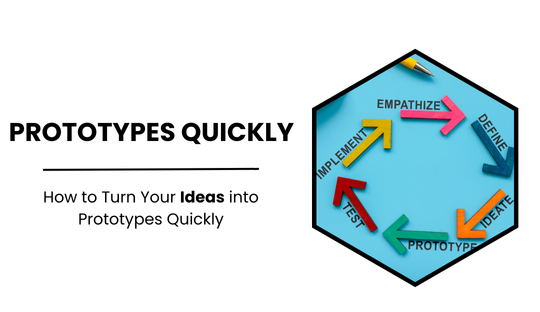
How to Turn Your Ideas into Prototypes Quickly
Turning ideas into tangible prototypes is a crucial step in the design and development process. At Flykez CO, a leading creative brand company in Lithuania, we specialize in website design & development, search engine optimization, brand design & brand identity, digital marketing, and UI & UX design. In this blog post, we will guide you through the process of quickly transforming your ideas into prototypes using various tools and techniques. Our approach focuses on speed, efficiency, and maintaining high standards of quality.
Understanding Prototyping
Prototyping is the process of creating an early sample or model of a product to test concepts and functionalities. It allows designers and developers to experiment with ideas and gather feedback before the final product is built. There are different types of prototypes, including low-fidelity prototypes (basic sketches) and high-fidelity prototypes (detailed, interactive models).
Steps to Turn Ideas into Prototypes Quickly
1. Start with a Clear Concept
Before diving into prototyping, ensure that you have a clear and well-defined concept. This includes understanding the problem you are trying to solve, your target audience, and the key features of your product. A well-defined concept will guide your prototyping efforts and keep you focused on your goals. Also read About The Evolution of Prototyping: From Paper to Digital
2. Choose the Right Prototyping Tools
Selecting the right tools is crucial for rapid prototyping. There are numerous prototyping tools available that cater to different needs and levels of fidelity. Some popular tools include:
- Figma: Ideal for collaborative design and creating both low-fidelity and high-fidelity prototypes.
- Adobe XD: Excellent for creating interactive prototypes with advanced animations.
- Sketch: A versatile tool for designing detailed user interfaces and wireframes.
- InVision: Perfect for building interactive prototypes and gathering user feedback.
3. Start with Low-Fidelity Prototypes
Begin with low-fidelity prototypes to quickly visualize your ideas. These basic sketches focus on the layout and structure without getting bogged down by details. Low-fidelity prototypes are easy to create and modify, allowing you to iterate rapidly.
4. Develop High-Fidelity Prototypes
Once the basic structure is validated, transition to high-fidelity prototypes. These detailed models include design elements such as typography, color schemes, and interactive components. High-fidelity prototypes provide a more realistic representation of the final product, making it easier to identify and address potential issues.
5. Incorporate 3D Prototypes
For products that require a more immersive experience, consider incorporating 3D prototypes. Tools like Blender and Unity allow you to create 3D models that provide a more engaging and realistic visualization of your design.
6. Use Rapid Prototyping Techniques
Rapid prototyping involves quickly creating and testing prototypes to accelerate the design process. This iterative approach allows you to gather feedback and make improvements continuously. Techniques such as paper prototyping, digital wireframing, and interactive prototyping can help you achieve rapid results.
7. Test and Iterate
Usability testing is a critical component of the prototyping process. Conduct tests with real users to gather feedback on the functionality and usability of your prototype. Use this feedback to make necessary adjustments and iterate on your design. Continuous testing and iteration ensure that your final product meets user needs and expectations.
8. Document the Prototyping Workflow
Maintaining a clear documentation of your prototyping workflow is essential for tracking progress and ensuring consistency. Document the changes and decisions made during each iteration, as well as the feedback received from users and stakeholders. This documentation will serve as a valuable reference throughout the development process.
Benefits of Rapid Prototyping
- Speed: Rapid prototyping accelerates the design and development process, reducing time-to-market.
- Flexibility: The ability to quickly create and modify prototypes provides greater flexibility in exploring different design solutions.
- Cost-Effective: Identifying and addressing issues early in the prototyping stage reduces the cost of changes during development.
- Improved Quality: Continuous testing and iteration lead to higher quality products that better meet user needs.
Conclusion
Turning ideas into prototypes quickly is a vital step in the design and development process. By starting with a clear concept, choosing the right tools, and using rapid prototyping techniques, you can efficiently create and test prototypes that meet user needs and expectations. At Flykez CO, we leverage our expertise in prototyping to deliver innovative and user-centric digital products. For more information about our services and how we can help you transform your ideas into reality, visit our website at www.flykez.com. Let Flykez CO be your partner in creating exceptional digital experiences.
